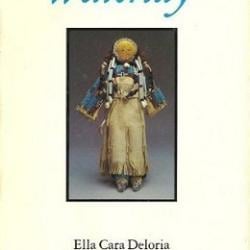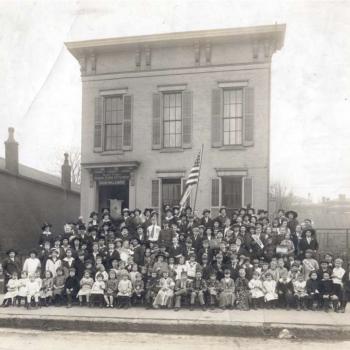In the final chapter of her bestseller The Making of Biblical Womanhood, my friend, colleague, and fellow Anxious Bench blogger Beth Allison Barr writes, “One of my friends, shortly after seeing a draft of my table of contents of this book, asked if the final chapter would contain a new vision for a theological approach to women in the church. Her words panicked me. I am a historian; not a theologian—and a very practical historian at that.” Beth went on to say that her theological intervention, informed by the narrative of church history that she articulates, was quite simple: “For those who still believe that biblical womanhood [as articulated by the modern complementarian movement] is God-ordained, my advice is…Stop it!” (205–206)
I have a confession: I am that friend.
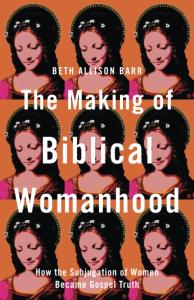 I agree with Beth that contemporary complementarianism misinterprets the Scriptures and hence cages women (and men) in ways contrary to God’s intention in creation and redemption. Beth’s burning passion is to free women (and men) from unbiblical strictures on their calling. That is the much-needed message of her book. I share this passion, but also feel drawn to the complementary work (see what I did there) of articulating a better theology of gender. Hence my question.
I agree with Beth that contemporary complementarianism misinterprets the Scriptures and hence cages women (and men) in ways contrary to God’s intention in creation and redemption. Beth’s burning passion is to free women (and men) from unbiblical strictures on their calling. That is the much-needed message of her book. I share this passion, but also feel drawn to the complementary work (see what I did there) of articulating a better theology of gender. Hence my question.
As I wrote this past summer, “I believe one reason complementarian teaching remains popular [despite its problems] is that many people consider being male or female a central part of their identity. They want it to mean something. And Christians who hold a theology of a purposeful creation rightly ask what God intended by two sexes.” I went on to note that I had not yet encountered a robust egalitarian theology of the meaning of sexual difference, and asked my readers to point me to one. No one knew of a published work that fit the bill. In other words, there was no alternative on offer. This is the result:
On the one hand, complementarian theology has generally been dedicated to over-articulating differences between the sexes to hold the line against a perceived disintegration of all gender distinctions in the surrounding culture, and as a marker of holding to an inerrant interpretation of Scripture. As I wrote earlier, “No one could accuse you of being liberal if you told women to never teach in church when there was a text that read “women should keep silent in the churches” (1 Corinthians 14:34, ESV). You might be wrong [about the meaning of the passage], but at least you wouldn’t be liberal.” Concern with a high view of Scripture and its teachings about some meaningful distinction between men and women is the genuine motivation of many complementarians. Many others—especially men but also some women—have been more motivated by a desire to hold onto their power within the system. But for both camps, complementarian theology has too often lacked an overarching vision of why God would bar some positions of authority from women but not men, and especially of why this would be beautiful and good news.
Meanwhile, on the other hand, egalitarian theology has generally focused on countering this over-articulation by arguing that the Bible does not indicate that husbands should always be in charge of households or that only men should always be in charge of churches or that all men have to be one way and all women another. In rightly protesting reducing gender to who’s in charge or to a set of stereotypical traits, this theology has lacked an alternative vision of the beauty of sexual difference.
Enter Aimee Byrd’s The Sexual Reformation: Restoring the Dignity and Personhood of Man and Woman.
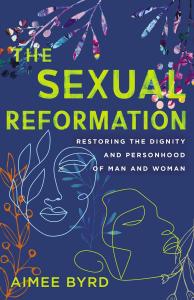 Byrd breaks genuinely new ground by offering a theology of gender based in the Song of Songs (also known as Song of Solomon), in keeping with the long history of Christian interpretation that sees this book as an allegory of the relationship between Christ and the church. In the theology she articulates, men and women’s embodied existence point all of us to truths about who God is and who we are. It means something to be male or to be female, in ways we can lean into. But it does not mean men rule over women, and it does not mean men or women should conform to a set of stereotypical traits.
Byrd breaks genuinely new ground by offering a theology of gender based in the Song of Songs (also known as Song of Solomon), in keeping with the long history of Christian interpretation that sees this book as an allegory of the relationship between Christ and the church. In the theology she articulates, men and women’s embodied existence point all of us to truths about who God is and who we are. It means something to be male or to be female, in ways we can lean into. But it does not mean men rule over women, and it does not mean men or women should conform to a set of stereotypical traits.
Byrd begins by highlighting the problem with the meaning of maleness and femaleness articulated by contemporary complementarian theology. In one of the founding documents of the movement, Recovering Biblical Manhood and Womanhood (1991), John Piper defines masculinity and femininity:
“At the heart of mature masculinity is a sense of benevolent responsibility to lead, provide for and protect women in ways appropriate to a man’s differing relationships. At the heart of mature femininity is a freeing disposition to affirm, receive, and nurture strength and leadership from worthy men in ways appropriate to a woman’s differing relationships.”
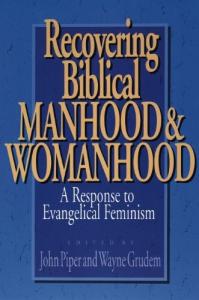 Byrd responds, “According to these definitions, what it means to be a man is potency in benevolent action toward women….And what it means to be a woman is, well, affirming this male potency….What is woman’s contribution? Where is any reciprocal enrichment in this?” (1–2)
Byrd responds, “According to these definitions, what it means to be a man is potency in benevolent action toward women….And what it means to be a woman is, well, affirming this male potency….What is woman’s contribution? Where is any reciprocal enrichment in this?” (1–2)
Against this reductionist theology, Byrd discovers a genuinely complementary vision of gender in the Song of Songs. Following the church’s history of allegorical interpretation, Byrd understands the Bridegroom in the Song to symbolize God, ultimately revealed in Christ, and the Beloved to symbolize God’s people, ultimately in the form of the church. The apostle Paul uses parallel typology, likely drawing from the Song as Byrd argues, in his hotly contested passage on marriage in Ephesians 5, where the husband, described as the “head,” typifies Christ while the wife typifies the church.
In my view, the aspect of this theology as ordinarily understood that ends up causing problems is that men are symbolizing something greater than themselves (Christ), while women are symbolizing themselves (part of the church). Even though, contrary to ancient interpreters, most contemporary complementarians assert spiritual and intellectual equality between men and women—and that both men and women are equally sinful—men are given greater temporal authority in both household and church because they are symbolizing a person with greater authority: the sinless Christ, fully divine as well as fully human. Whether the right way to symbolize Christ is by reserving to yourself positions of power is another matter.
Byrd’s interpretation, though, largely eliminates this problem by perceiving in the Song something Paul worked into Ephesians 5 but that complementarian interpreters seem to miss: the Beloved does not symbolize the church now. Rather, she symbolizes the future glorified church.
Consider the implications of this fact. All of a sudden, it’s no longer true that a man symbolizes someone greater than himself and a woman does not. Now both men and women symbolize someone greater than themselves, both symbolize someone free from sin, and both have something different to learn from the other. They are genuinely complementary.
Here is the symbolism Byrd exegetes in the Song:
The woman’s skin is said to be damaged by the sun as a result of the exploitation of her labor, but in the Bridegroom’s eyes, she is described as physically perfect, as she likewise describes him. He declares, “There is no blemish in you” (Song of Solomon 4:7, NASB1995). Paul will later elaborate, “Christ also loved the church and gave Himself up for her, so that He might sanctify her, having cleansed her by the washing of water with the word, that He might present to Himself the church in all her glory, having no spot or wrinkle or any such thing; but that she would be holy and blameless” (Ephesians 5:25b–27, NASB1995).
Clearly the bride is picturing sanctified humanity. But there is more to the Song’s portrayal of her than that. Those odd descriptions to modern ears of the woman’s physical perfections—“your neck is like the tower of David” (4:4)—make a lot more sense when we realize that the woman is being described as a fortified city at peace, the New Jerusalem to come when the literal and spiritual warfare of this life is complete. As Byrd spins it out with respect to other metaphors for her, the woman represents not only glorified humanity in union with Christ, but also the location and nature of that union: the New Jerusalem, the final temple, the better garden of Eden.
Interpreting the Genesis narrative in light of Scripture’s development of these themes in the Song, Byrd writes, “When Adam saw woman for the first time, he saw the eschatological beauty of the telos of man and woman” (119). That telos, that final purpose, is being “the bride of Christ, the church flowing out of Christ’s wounded side” (126), symbolized by Eve’s creation from Adam’s side, and “the union of Christ with his bride, and the communion of the saints” (119). Eve was created second not to mark woman as subordinate to man, or even humankind as subordinate to God, but because she told the story of what would come chronologically later for humankind: glorification in union with Christ.
A key passage for Byrd’s understanding of the significance of this typology is the Bridegroom’s repeated call to the Beloved, “Let me hear your voice” (2:14, 8:13). The Beloved opens and closes the Song, and sings more words than the Bridegroom. He empowers her to speak. How unlike too many churches.
I should add that the contours of Byrd’s analysis are incredibly rich and far more nuanced and detailed than can be captured in a brief review. I urge you to pick up a copy and read it for yourself. Her passion for the Scriptures and their message is contagious.
So what would adopting this theology of gender mean on the ground?
Byrd articulates a slightly different inflection to the way husbands and wives express their love to one another. To make sense of her argument, we must note that Byrd understands rightly held power as authorization for action, and that such power and hence authorization is the result of receiving a gift from God: “Giving is an act of authority. And in God’s act of giving, the receiver is authorized to reciprocally give love” (121). In being given as gifts by God to one another, both husband and wife are “authorized to love and promote the holiness of the other in their aim for eternal communion with God and his people” (119).
Byrd argues that, patterned after Christ, the man in marriage, created first, is “authorized to be the first to love, the first to sacrifice, the first to serve, the first to give power to other persons, not to exercise power over them. We see this distortion of the gift as the effects of the fall, described in Genesis 3:16” (119–120). This is a headship of sorts, but it is a headship of responsibility to serve, not final decision-making power. It is not “servant leadership” as commonly understood today, where the emphasis is on leadership and “servant” just modifies it. Rather, it is the leadership of service, full stop.
While men symbolize God in this metaphor, because women and men are equally the image of God, what men are symbolizing is actually a very particular aspect of God: not his right to rule, but rather his self-emptying initiative in Christ to expend his strength and power to lift us up. The physically and socially more powerful partner images God not through holding onto that power, but by pouring it out to empower others.
But of course the wife is equally called to serve her husband, so is there anything truly different here? Women and men are both humans commanded first and foremost to image God by loving one another as themselves, so it necessarily looks much the same. To be honest, Byrd does not spin out women’s particular inflection quite as much, and I suspect this is because one of her primary audiences is men in power in the American church who have misunderstood that power. But she does offer some tantalizing comments that suggest how women’s embodied existence inflects how wives use their particular type of power to love.
The physically and socially more vulnerable partner in a healthy marriage images God’s ultimate intent for humanity by displaying that our dependence on God does not mean oppression, but rather empowerment for service, because God’s nature is to empower rather than to exploit. A particular application of this principle that Byrd elaborates is that a wife’s receptivity to childbirth images that receiving a gift empowers her to, in Byrd’s repeated word, “fructify” it, and creatively return it. Byrd further dignifies women’s role in nurturing new life—and reminds us that poetic images are not intended to translate into rigid rules—by arguing that in this way women uniquely image Christ, who birthed the church through messianic suffering.
These applications invite at least two questions: What about single people or childless people or people who do not identify as heterosexual? And what about church leadership?
Byrd does an excellent job nuancing the implications of this metaphor for people in various life situations. For the unmarried particularly, she writes, “Single, chaste lives point to that longing for the coming of our Bridegroom, while representing that they are whole persons in him, not in another, not in a role they perform. Singles also represent that one relational attribute toward one another that extends into eternity: sisters and brothers” (200).
Byrd holds to a traditional Christian sexual ethic but expresses care for people who do not fit the heterosexual mold. She notes that nothing in the typology she has laid out forces men or women into stereotypical traits like aggressiveness or passivity, and does not dictate our vocations in this world. No one should feel like less of a man or less of a woman because they don’t have those traits or work in a particular field. Our bodies tell a story, and they inflect how we love one another, but we are first and foremost individuals uniquely created and gifted by God.
Regarding the second question, Byrd does not spell out what she thinks the implications of this theology are for male leadership in the church. At first, I found this maddening. And then I decided this might have been the right call. She has a heart for the very conservative types of churches that she has inhabited. She wants churches, whatever their polity, to start listening to women’s voices and, patterning themselves after Christ, to start actively inviting women to speak. She has made a compelling argument for them to do so regardless of whether they hold to all-male eldership or embrace female pastoral leadership.
But what does Byrd actually think? In a recent blog post, she rejected both the term “complementarian” (for all the reasons laid out above) and the term “egalitarian” (presumably for lack of gender specificity). She then added that “I do see something representational in male and female in [church] worship and government,” but explicitly states that she is not sure whether that means eldership should be limited to men: “Is the office of pastor or elder representational of the best man of the Groom? Maybe so. But the Groom is all about his sister/bride, his gift from the Father. He isn’t trying to shut her up. Whoever is in leadership, their calling is affirmed in the way they join with the Son in saying, ‘Let me hear your voice.’ I will continue to explore these matters.”
In other words, she’s thinking it through. More people should have her courage to say that.
This book is not the last word. There are things I would tweak or push back on or make more specific. It doesn’t do all that needs to be done to reform our theology of gender. It does not intend to. It intends to reframe the conversation and set us on the path. And that it does. Please, let’s walk it. Byrd would no doubt say to all of us who see something of great value here and want to build on it or nuance it: “Let me hear your voice.”







